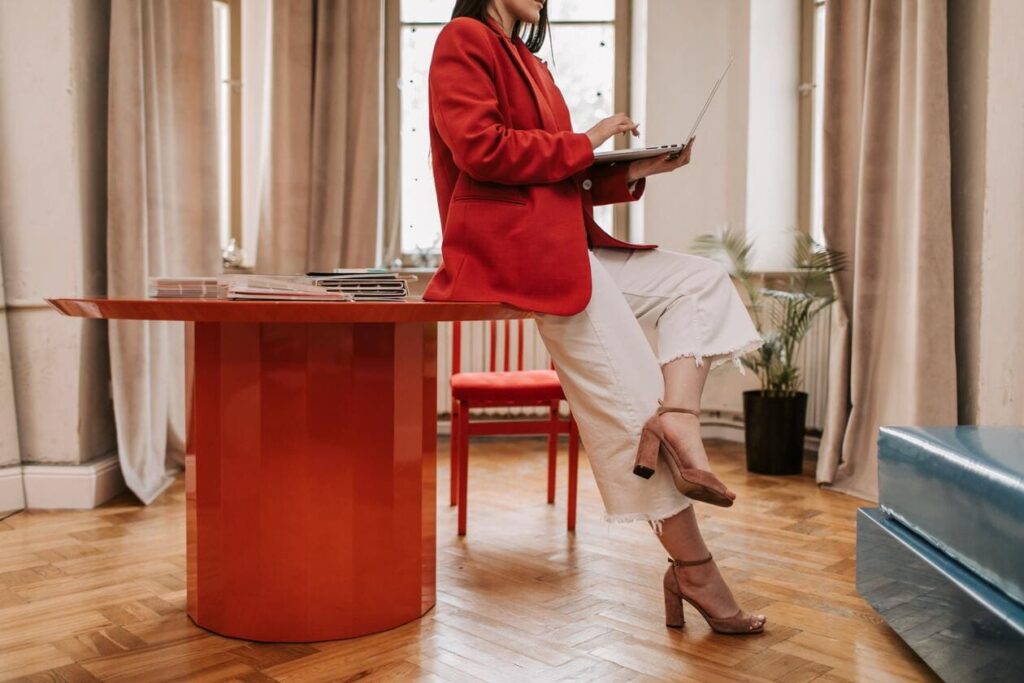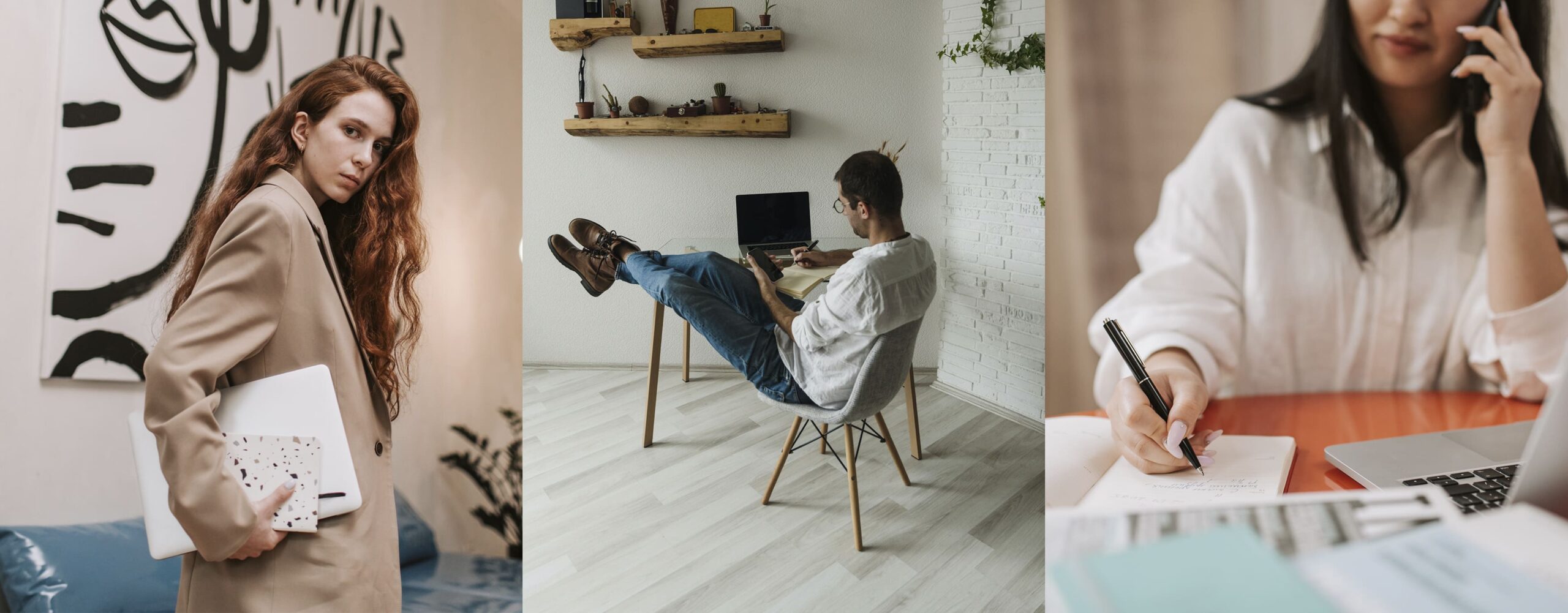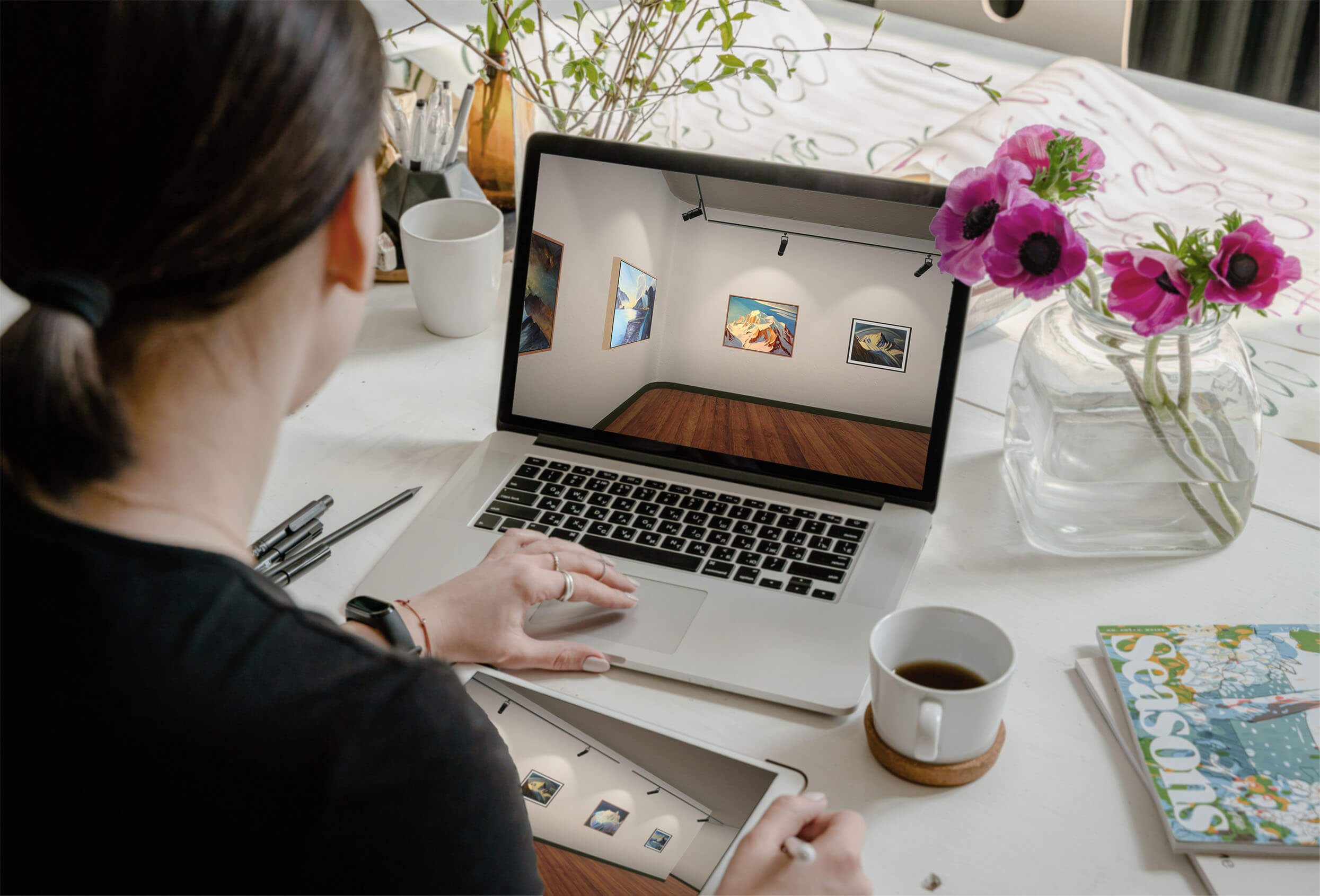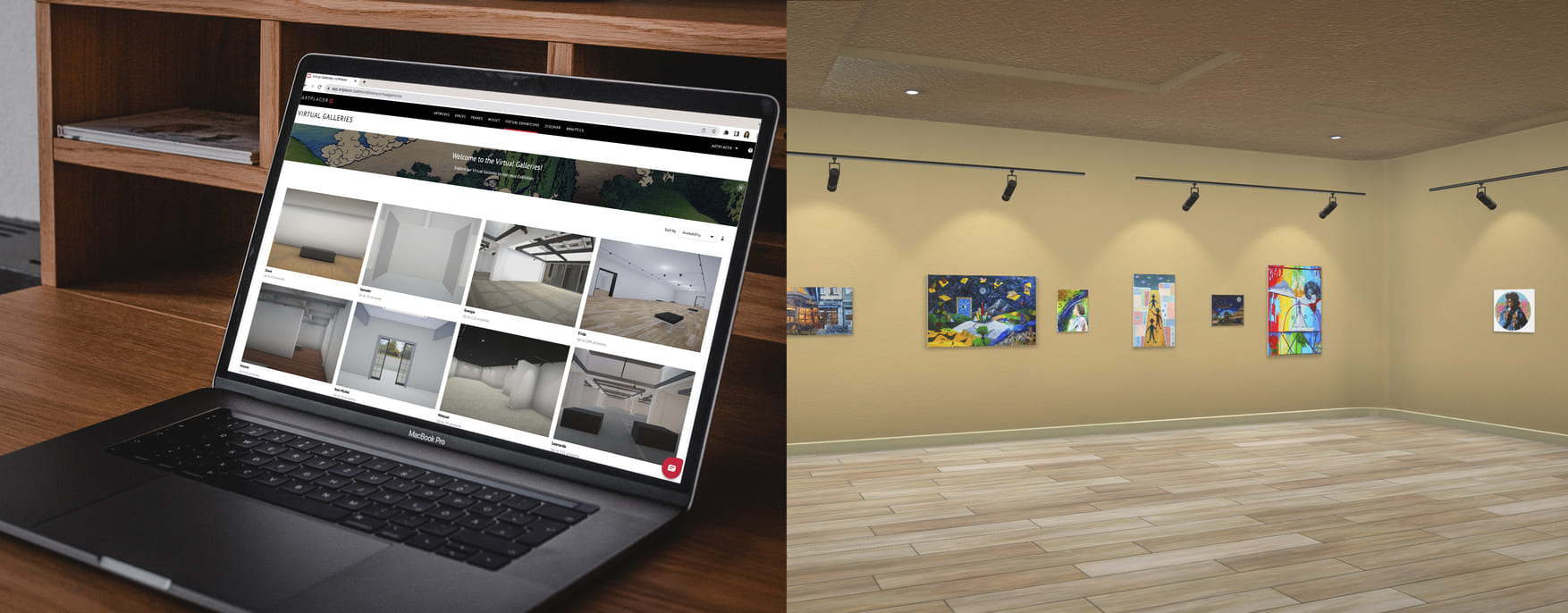If you want to boost your sales or achieve a consistent sales flow of your artworks, you need a strategy that sparks potential collectors attention and drives them to engage with your creations. As an independent artist, that means putting on the hat of Head of Marketing and Sales of your art business.
In order to fulfil this role or start taking steps towards it, you need to get familiar with certain marketing concepts and strategies that will help you draft a blueprint of how to achieve those goals. Keep reading to take a deep dive into basic art marketing notions and how to apply them to communicate with your desired audience and drive more sales.

Contents
What is Art Marketing
In its most traditional concept, Marketing is the mix of actions that drives a customer to perform an action that is profitable for a brand: interacting with it, purchasing its products, or acquiring its services.
This concept may arouse some debate in the art world but there is a lot that artists can learn from it. Behind every piece you create there is a desire to share it with the world, and that’s where marketing comes in.
With that in mind, we could define Art Marketing as the actions an artist takes to interact with an audience, communicating their message through different channels and with different pushes, in order to lead them to a purchase or any other desired action.
All of this process can be revised and its success can be measured. Bear in mind, a purchase is not the only sign of success, each step of this process should be tracked and measured, to see how effective every action has been and how it leads into that final result.
Ask yourself the following questions to apply this concept to your current sales and promotional strategies:
Who’s your audience? Is the people you want to reach, potential customers, art collectors and lovers. Your audience is divided between those you have already engaged with and those who could potentially join this group.
What is your reach? In marketing this word refers to both the total number of people that interact with your content and the channels you use to generate this interaction.
What’s your message? Well, that’s what you do, what you represent, and what you want to express. The only person that knows the full answer to this question is you.
What action are you taking? This refers to all types of pushes you make to reach out to the people you have defined as your target audience. This can go from a social media post to a full ad strategy.
What are your measurable results? If we are talking about marketing you might think the result is finally selling your piece. And yes, that’s the end goal, but each one of the concepts we have just reviewed offers a certain result that makes that final sale of your art possible. Every goal is related to an action, the effectiveness of it should be measurable, and that data and its interpretation is what we know as analytics.
What is an Art Buyer’s Journey
If there is one marketing concept every artist should know, that is: the buyer’s journey, which is the full funnel a customer goes through from the point of awareness of the brand or its product, to a final action like a purchase.
By adapting the concept of “buyer’s journey” to the realities and needs of an artist marketing strategy, we can come up with our own definition of an Art Buyer’s Journey that responds to today’s art world landscape.
An Art Buyer’s Journey would be the full road or process a potential customer does from the moment they become aware of your artwork through a certain push, till the moment they make that desired purchase action.

How to create an Art Buyer’s Journey
Step 1: Awareness
This is the top of the funnel. In this stage, the main focus is generating engaging content that can capture potential customers’ attention. Something that will make them stop scrolling and really take a look at what you do.
With ArtPlacer’s Library of Spaces and Smart Spaces, you can easily tackle this step. These digital room mockups can help you showcase your art and communicate how it interacts with the space, plus it gives you the chance to express your artistic full vision. You can pick rooms with different styles and customize the colors to express your aesthetic.
Room mockups are a perfect solution to enrich your social media feed and give a broader view of your work.
Exhibition “Flanêur: New York City Streets” by street photographer Clay Benskin. Curate your show
Step 2: Interest
At this point the art lover is already aware of who you are and what you do, but you need to be present in their day to day with different art marketing pushes to keep them engaged and keep you on top of mind.
One of the best ways to engage your audience with your work are online art shows, these are virtual exhibitions you can easily curate and customize to your liking. These are available 24-7, from any part of the world. Your exhibition is just one click away for anyone who’s online and gives you the chance to not only present your work but to tell a story around it, helping visitors get immersed in what you propose as an artist.
Step 3: Intent
By now the art lover is not only a visitor browsing around, they are engaged with what you are creating and promoting, they are interested in your work and might be considering acquiring it.
Buying art is an investment, people don’t take it lightly, so we need to be one step ahead and provide them with blunt information that solves all of their doubts and lead them to make a purchase or commission.
You can provide a Try-Before-You-Buy experience with our Website Integrations:
–AR Widget: augmented reality widget works with the free ArtPlacer app. The visitor can download it, pick one of your art pieces and see how it will look laid out on their own walls in its precise dimensions.
–Client room widget: the visitor can upload pictures of their walls and layout your artwork, to see how it would look in conjunction with the space.
–Sample room widget: this allows art collectors to visualize your art on scale in pre-existing rooms of your choice.
Step 4: Purchase
At this point the art lover is about to convert into an art collector. They are about to click on the buy button and acquire one of your pieces. It sounds simple but it’s one of the most crucial points of the Journey. Any friction in the process can derail the collector and make you lose a sale.
Having in mind that 60% of millennials and gen-z prefer direct-to-consumer e-commerce, this means they go online and browse social media to get information about the product and make a few clicks to obtain it. The purchase process needs to be as frictionless as possible.
ArtPlacer Website Integrations will give your page that e-commerce feel along with a Buy and Inquiry button. This reduces the amount of time it takes a collector to make the transaction, they don’t have to reach out to find your email, ask for availability, once they know what they like they just have to click and purchase it.
Step 5: Loyalty
This is an ongoing journey, people might be joining it at different stages at all times. It’s necessary to think of different strategies to keep feeding the journey: attracting new potential collectors, engaging those who are already in the journey and returning those who have already completed it before.
If all actions in the Art Buyer’s Journey are measured, you have a blueprint of what pushes worked and which need some tweaking. Here is where Analytics comes to play.
Analytics is data about customer behavior that gives you a clear picture of which communication channels and formats work the best to reach out to your target audience, and which drove them to take certain actions.
ArtPlacer offers Analytics for Website Integrations and Virtual Exhibitions. With this feature you can get a deeper understanding of who’s interested in your work, learn your audience’s interests (most clicked artwork, most visited exhibition) and which actions you could replicate for better results. This can also give you insights into which stages of the Journey are causing friction and improve them.
What actions can you take today to improve your art marketing journey? Build your first Art Buyer’s Journey today!



